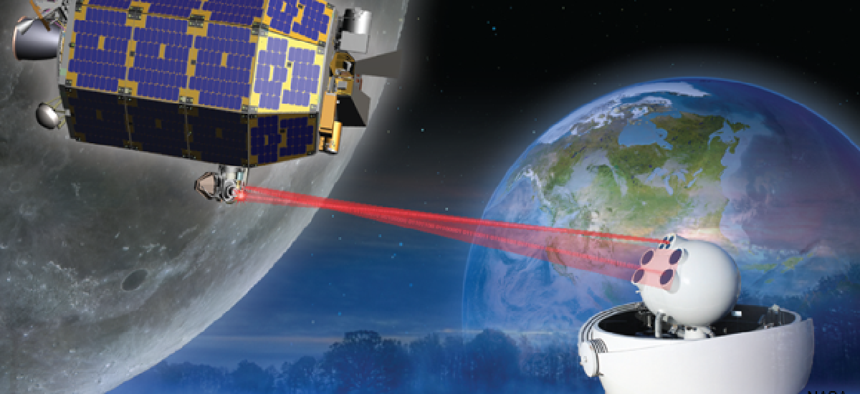Moon beams: NASA set to test laser space communications


Connecting state and local government leaders
A lunar mission launching this month will test two-way laser communications, which will transmit six times the data at 25 percent less power.
NASA has been using its Deep Space Network (DSN) for space communications for quite some time, and it's worked pretty well. The DSN comprises large dish antenna arrays at three locations approximately 120 degrees apart on Earth: at Goldstone, Calif., in the Mojave Desert; near Madrid, Spain; and near Canberra, Australia. Each complex has a 70-meter antenna and several 34-meter antennas, sizes that give them strong radio frequency signals and the ability to send and receive high quantities of information.
However, the network is fairly old and its communication channels are getting a bit crowded. The large, 70-meter antenna at Goldstone, built when NASA’s missions began leaving the Earth’s orbit, has been in operation for more than 40 years, although it was upgraded in 2010. And with so many missions going on at the same time, transmissions sometimes need to be timed so that they don't block one another.
NASA is working on improving transmission speeds through space, and trying to improve its Ka-band (26 to 40 MHz) availability for 1 gigabit/sec links.
But the way forward may be to leave radio waves behind and move to laser communications. As a demonstration, when NASA’s Lunar Laser Communication Demonstration (LLCD) begins operations this month aboard the Lunar Atmosphere and Dust Environment Explorer (LADEE), it will attempt to show that two-way laser communications beyond Earth is possible. Moving to lasers from radio waves could allow communication over greater distances because, in space, line of sight is almost never a problem. The bandwidth offered by two-way laser communication might also allow 3D video to be transmitted, giving a better view of space, the moon and the planets.
“The goal of the LLCD experiment is to validate and build confidence in this technology so that future missions will consider using it,” Don Cornwell, LLCD manager, said in a report on NASA's news page. “This unique ability developed by MIT [Massachusetts Institute of Technology Lincoln Laboratory], has incredible application possibilities, and we are very excited to get this instrument off the ground.”
Compared with a state-of-the-art RF system, LLCD is designed to transmit six times the data from a smaller transmitter using three-quarters of the power, while being less susceptible to interference or jamming, Cornwell said.
NASA has already been experimenting with lasers, having famously beamed the Mona Lisa to the moon using the same technology earlier this year. Writing about that project, Cornwell noted that, while impressive and mostly successful, the new LLCD experiment will be grander in scale and could pave the way for future space communications. The Mona Lisa experiment “was done at only hundreds of data bits per second,” Cornwell said. “LLCD will be the first dedicated optical communication system and will send data millions of times faster.”
So get those 3D glasses ready, because TV from space, delivered via lasers, is on the way.

NEXT STORY: How 3D maps can get more accurate




